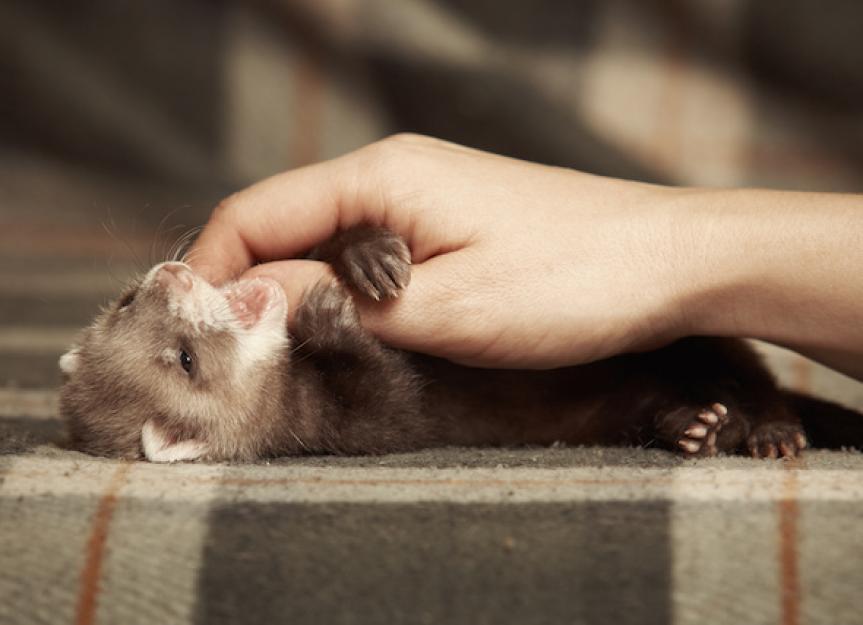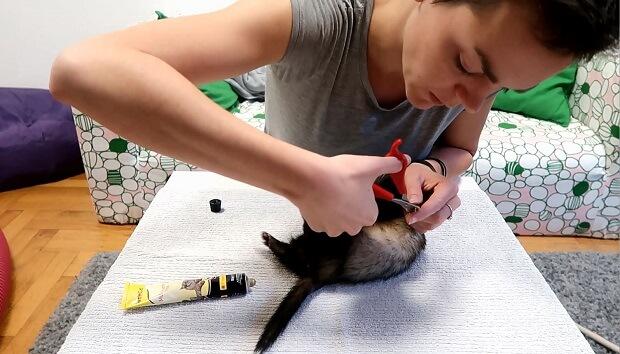
Ferret Care Essentials: Do’s and Don’ts for New Owners
Bringing a ferret into your home is like welcoming a bundle of curiosity and energy—small, fluffy, and brimming with personality.these whimsical little creatures, with their playful antics and inquisitive nature, can quickly earn a special place in your heart. However, along with the joy of ferret ownership comes the duty of providing proper care to ensure a happy, healthy life for your new companion. As a first-time ferret owner, navigating the world of ferret care can feel overwhelming, with a myriad of do’s and don’ts that can make all the difference. In this article, we will explore the essential guidelines that will help you create an enriching environment for your furry friend, ensuring that your journey together is filled with bonding moments, playtime, and tail-wagging joy. Whether you’re setting up a cozy habitat or looking to understand their unique needs, we’ll guide you through the must-know tips and common pitfalls, equipping you to be the best ferret parent you can be. Welcome to the delightful world of ferrets!
Table of Contents
- Understanding ferret Behavior and Social Needs
- Creating an Enriching Environment for Your Ferret
- Essential Nutrition and Feeding Practices for Ferrets
- Grooming and Health Care: Maintaining Your Ferret’s Well-being
- In Retrospect

Understanding Ferret Behavior and Social Needs
Ferrets are highly social creatures, thriving on interaction with both humans and other ferrets. Understanding their social needs is essential for any owner looking to provide a happy and stimulating environment. It’s important to note that ferrets are naturally playful and curious, requiring ample time outside their cage to explore and engage in activities that mimic their natural behaviors. Regular playtime is crucial, as it helps prevent boredom and promotes physical health. To ensure your ferret’s happiness, consider the following:
- Companionship: Having at least two ferrets can significantly fulfill their social needs and enhance their well-being.
- Interactive Play: Engage in daily play sessions using toys, tunnels, and even safe household items that can incite their curiosity.
- Routine Handling: consistent handling and gentle interaction help build trust, making ferrets more pleasant around their owners.
- Socialization: Expose them to new environments and safe interactions with other pets (with supervision), enhancing their adaptability.
When it comes to their behavior, ferrets communicate through body language and sounds. A ferret that is comfortable will often display playful behavior such as “weasel war dances,” where they leap and twist in the air. Recognizing these signs can guide owners in understanding whether their pets are happy or stressed. It’s essential to watch for warning signs of discomfort,such as hissing or biting. The following table outlines common behaviors and their meanings:
| Behavior | Meaning |
|---|---|
| Weasel Waddle | Excitement and playfulness |
| Hissing | Discomfort or aggression |
| Napping | Feeling safe and secure |
| Chattering | Excitement or communication |

Creating an Enriching Environment for Your Ferret
To ensure your ferret thrives,it’s crucial to establish a stimulating environment that caters to their inquisitive nature. Incorporate a variety of toys and enrichment activities that promote physical and mental exercise. Consider using items such as:
- tunnels: Ferrets love to explore tight spaces and run through tubes.
- Climbing Structures: Using hammocks and platforms can encourage climbing and jumping.
- Chew Toys: Safe items to gnaw on will help keep their teeth healthy while satisfying their natural instincts.
In addition to toys, it’s beneficial to create a safe play area where they can interact with their surroundings. Regular rotation of toys and materials can keep their environment exciting. Make sure to ferret-proof any spaces they have access to by removing items that could be harmful or tempting to chew. It’s essential to provide a balance of social interaction, with plenty of time spent playing and bonding as well as quiet areas where they can retreat and rest. Consider establishing a routine that includes:
- Daily Playtime: Set aside dedicated time each day for interactive play.
- exploration sessions: Supervised exploration of safe areas can satiate their curiosity.
- Socialization Opportunities: Provide interactions with other pets or family members to keep their social skills sharp.

Essential Nutrition and Feeding Practices for Ferrets
Providing the right nutrition for your ferret is crucial for their health and vitality. Ferrets are obligate carnivores, meaning their diet must primarily consist of high-quality animal protein. When selecting food, look for brands that list meat as the first ingredient, ideally chicken, turkey, or another high-quality source.In addition to a balanced diet of ferret pellets, incorporating occasional fresh meat can enhance their diet. Here are some critical points to consider:
- High Protein Content: Aim for a diet with at least 30-38% protein.
- Healthy Fats: A fat content of 15-20% is essential for energy and skin health.
- Avoid Carbohydrates: Limit grains and carbohydrates, as ferrets cannot efficiently digest them.
- Fresh Water: Always provide clean, fresh water to keep your ferret hydrated.
Feeding practices should also be tailored to the natural behaviors of ferrets. These curious creatures tend to eat small meals throughout the day, resembling their foraging habits in the wild. It’s advisable to offer multiple meals rather than large portions. Additionally, you can establish a feeding schedule that suits your routine, ensuring that your ferret eats consistently. Here’s a simple feeding guide:
| Age | Amount of Food |
|---|---|
| Baby (8 weeks – 6 months) | 2-4 meals daily, ¼ to ½ cup of food |
| Adult (6 months - 4 years) | 2 meals daily, ½ to 1 cup of food |
| Senior (4 years and older) | 1-2 meals daily, adjust based on activity level |

Grooming and Health Care: Maintaining Your Ferret’s Well-being
To ensure your ferret thrives, regular grooming and health care are crucial. Start by checking their fur and skin for any unusual signs such as lumps, bumps, or parasites. A ferret’s coat should be shiny and free of matting. Frequent brushing not only keeps their fur in good condition but also fosters a bond between you and your pet. Additionally, monitor their nails, as overgrown nails can lead to discomfort and potential injury. Aim to trim them every few weeks, giving your ferret the freedom to scurry about comfortably.
Dental health is another vital aspect of your ferret’s well-being. Incorporate dental treats into their diet to help reduce plaque buildup and promote healthy teeth. Regularly examine their teeth for signs of wear or disease and consult a vet if you notice any issues. It’s also important to establish a vaccination schedule and maintain routine veterinary check-ups for early detection of health problems. Keeping a log of your ferret’s health history can provide valuable information for your veterinarian during these visits. Consider the following essential health care actions:
| Health Task | Frequency |
|---|---|
| Grooming (brushing) | Weekly |
| Nail Trimming | Every 2-3 weeks |
| Dental Checkup | Every 6 months |
| Veterinary Visit | Annually |
In Retrospect
As we conclude this exploration of ferret care essentials, it’s clear that embarking on the journey of ferret ownership is both exciting and rewarding.By adhering to the do’s and don’ts outlined in this guide, you’re not just ensuring that your furry companion thrives but also enriching your own life with their playful antics and affectionate nature. Always remember that every ferret is unique, and your relationship with them will be a tapestry woven from patience, understanding, and love.
the key to being a triumphant ferret owner lies in continuous learning and open communication with experienced caregivers and fellow owners. Whether you find yourself navigating the depths of diet choices or creating an engaging play environment, embrace each experience with curiosity and care. With a solid foundation of knowledge and an unwavering commitment to your little friend, you’ll be well on your way to fostering a happy and healthy home for your ferret. Happy caring!





